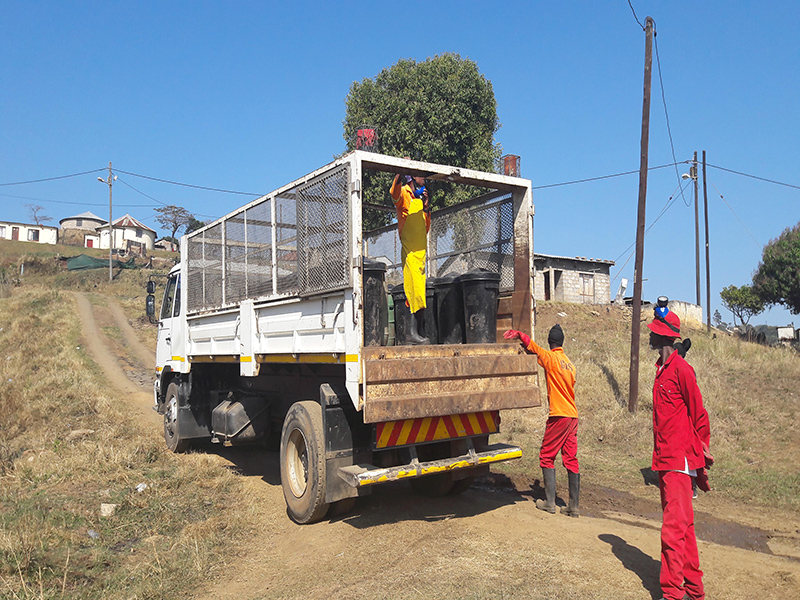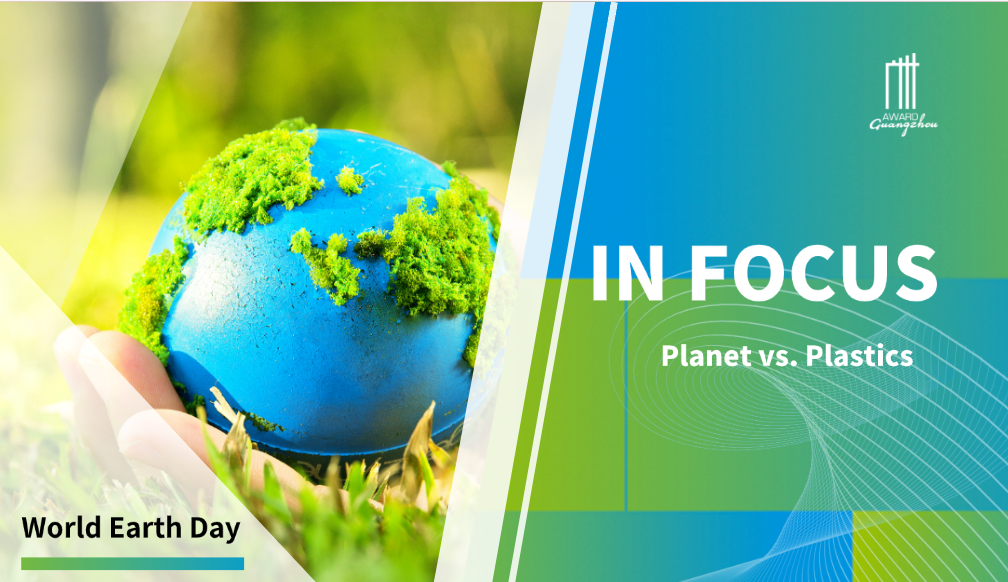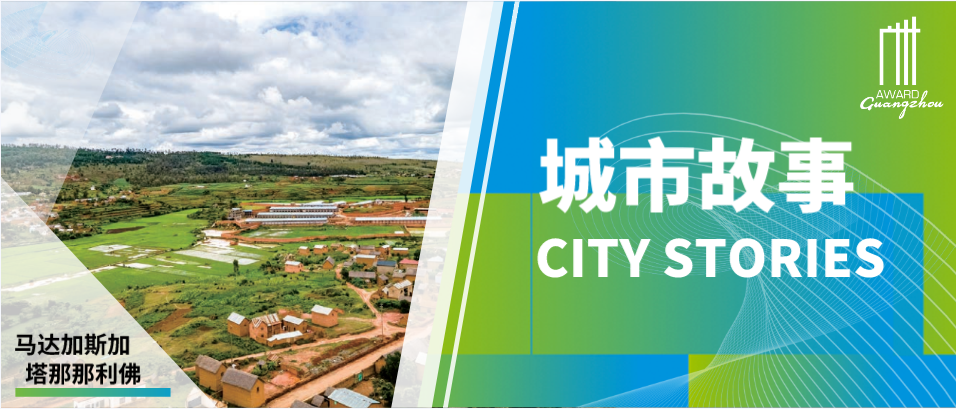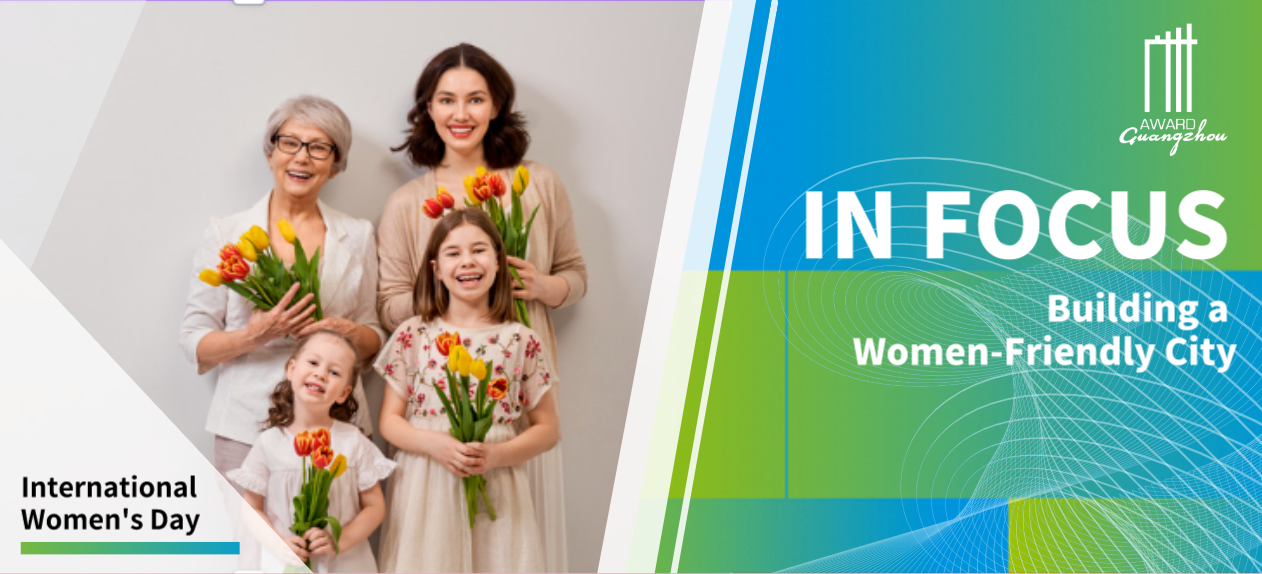eThekwini, South Africa
I. Incremental, Participatory, Programmatic Informal Settlement Upgrading Programme

BASIC CITY DATA
Population size: 3,900,000
Population growth rate (%): 1.40
Surface area (sq.km): 2556.00
Population density (people/sq.km): 1523.00
GDP per capita (USD): 4819.00
Main source of prosperity: Finance sector (26% of GDP), closely followed by manufacturing (25%), trade (21% and transport (18%)
ABSTRACT
The programme has at its core the delivery of infrastructure to informal settlements. This comprises communal ablutions facilities (toilets, showers, sinks and wash-troughs for laundry); individual electrification; improved footpaths, access roads and storm-water controls; refuse collection; and improved facilities for Early Childhood Development Centres. Residents’ right to stay on the occupied site is recognized, resulting in safety from eviction and the right to benefit in the incremental upgrading process.
At an estimated 10 households serviced for the same cost as one home can be built in a conventional housing project, this programme accelerates the City’s response to informality and urbanization.
Beyond infrastructure, the programme promotes urban safety through the city’s safety strategy, fosters sustainability and resilience, and works with local communities to overcome the challenges, urban poverty, economic exclusion and spatial injustice.
This new approach to upgrading is inclusive of all informal settlements, incremental, participative, partnership-orientated and differentiated.
BACKGROUND INFORMATION
The initiative is aligned to Sustainable Development Goal 11: Make cities and human settlements inclusive, safe, resilient and sustainable. The programme speaks directly to the eThekwini vision of “Durban is Africa’s most caring and liveable city by 2030”, as well as Plan 3 (Create Quality Living Environments) of the City’s 8 point plan as per the Integrated Development Plan. It contributes towards the goals outlined in the Integrated Urban Development Framework as well as the National Development Plan.
ORIGINS
More than 220,000 households in eThekwini live in informal settlements. These are characterized by overcrowding; disasters including fires and floods; poor access to basic services including water, sanitation, electricity and emergency access; and high rates of communicable disease. Despite the construction of over 200,000 fully subsidized homes for the poor since 1994, the city is witnessing the perpetuation and spread of these settlements.
Addressing the myriad of challenges within informal settlements is a complex and difficult exercise, requiring a coordinated, aligned and integrated approach. Providing a house at no cost to the beneficiary is not sustainable given fiscal constraints and the ever-growing backlog. A solution incorporating social and economic opportunities that transform settlements into truly liveable and sustainable neighbourhoods is required.
The Programme aims to benefit 70,000 households within 6 years.
Improved stakeholder engagement is critical for success. The Municipality is undertaking proactive steps to understand the complexities that face informal settlements, and to address this challenge via a number of initiatives with various stakeholders as partners, including:
National Department of Human Settlement’s National Upgrading Support Programme: Participatory Planning, Sustainable Livelihoods and Facilitation Support to Informal Settlement Upgrading Projects
National Treasury’s City Support Programme: Technical Support for the Innovative Upscaling and Upgrading of Informal Settlements
Infrastructure Improvements for Early Childhood Development (ECD) Centres in Informal Settlements
Grassroots Approaches Towards Self-Reliance in South Africa: the Isulabantu Project (Informal Settlements Upgrading Led by the Community)
European Union (EU) funded Informal Settlement Incremental Upgrading and Integration Partnership Programme (iQhaza Lethu).
Resilient City Strategy: Resilience Building Option 1: Collaborative Informal Settlement Action
Private Sector Social Responsibility: Blackburn Village Social Sustainability and Innovation Program (SSIP) – iThuba Centre
MOA with the South African Shack Dwellers International Alliance - providers of expertise in community-driven, participative and incremental programmes in informal settlements.
eThekwini chairs the African Forum on Urban Safety and works with UN-Habitat to promote urban safety, with a focus on informal settlements.
Current funding sources include:
Urban Settlements Development Grant (from National Treasury);
Other spheres for some of the social infrastructure, particularly schools and clinics.
INNOVATIVE ASPECTS
The programme is evolutionary in that informal settlement upgrading has long been a priority for eThekwini. More than 200,000 fully subsidised houses were constructed since 1994. The housing backlog has however increased as urbanisation drives people to the city in search of urban opportunities. This programme has been extremely expensive and contributed to urban sprawl.
In 2011, Council approved the adoption of interim services in informal settlements which were not part of eThekwini’s short term housing delivery programme. Development of aprogrammatic approach resulted in the selection of informal settlements utilizing the Housing Spatial Prioritisation Model.
This type of initiative is a first for any city in the country and has been presented to various municipalities at their request. It has also sparked international interest. The project has been recognised by the National Department of Human Settlements, as a critical intervention in meeting National objectives.
The planning, design, implementation, financing and technology where all agreed to upfront by key service units of the Municipality. The transversal nature of this programme has created the need for new institutional structures to develop a joint vision and plan across line departments.
The water and sanitation bulks provided, together with the roads and footpaths, stormwater controls and electrical connections, are deemed permanent and in line with layout plans for the eventual implementation of a housing project. There is no wasted cost in providing these services as they will be an integral part of a future housing upgrade project when eventually implemented.
Job creation is pivotal to the Programme with the employment of local labour and sourcing of materials from local businesses where possible. Caretakers of ablution blocks are identified from the local community and remunerated by the Municipality.
Given fiscal constraints, the long lead-times undertaken to implement conventional housing upgrading projects and an ever-growing informal settlement backlog which would take many years to overcome, communities have themselves realized the benefits of the programme and have welcomed the interventions. Communities get to determine and prioritise the services they would like to see constructed and this participatory planning has led to support for the initiative.
DESIRED CHANGE OR OUTCOME
The positive impact of the Programme can be summarised as follows:
Ability to prioritise the rapid delivery of basic services to as many settlements as possible.
Acceptable engineering standards established in order to make effective use of the limited budget available.
Road and footpath layouts will as far as possible remain in place for final upgrade of settlement avoiding abortive costs.
Opportunities for Emerging Contractors and alignment with the Expanded Public Works Programme providing employment.
Caretakers employed from the local community for the Ablution Blocks.
Livelihoods initiatives, LED and the provision of key social facilities to be addressed through parallel programmes.
Enhanced community engagement which empowers residents, creates ownership and improves project outcomes.
Improvements to Early Childhood Development (ECD) centres
Delivery to date of other related infrastructure as follows:
Sanitation blocks: 1,507 facilities serving approx. 113,000 households in over 370 settlements
Electrical connections: 254 settlements fully electrified and 56 partially electrified serving over 36,000 households (connections)
Water supply (standpipes & via communal ablutions) to most settlements including ‘relocation’ settlements: at least 148,000 households within approximately 231 settlements
Roads: 33 informal settlements / 17,459 households
Spending and delivery are monitored on the municipality’s Service Delivery and Budget Implementation Plan. An outcome of the ongoing iQhaza Lethu project is developing an impact assessment framework to better understand the medium to longer term implications.
The initiative is driven by an innovative transversal management structure who drive installation of infrastructure, budget commitments and create alignment between various line departments working in the informal settlement arena.
The initiative aims to improve the living conditions of residents of informal settlements. It aims to hinder the spread of communicable diseases through improved access to sanitation, improve emergency response times though improved access, prevent shack fires and improve air quality and reduce dangerous illegal connections through electrification. Upgrading these settlements in-situ (rather than relocating communities to the urban periphery) enables residents to access social amenities like education and health services and contributes to social cohesion, spatial justice and urban integration.
LEARNING ASPECTS
The new approach to upgrading needs to foster a different and more functional relationship between the state and the urban poor which is not premised solely on state service delivery but which also leverages the partnerships necessary for more effective social capital formation, collaboration and ‘self-help’. There also needs to be a focus on more than just basic services, functional tenure and incremental housing improvements. Key social services are also important as is more effective access to public transport and economic opportunities. Furthermore, it is also important to encourage beneficiaries to be more independent. This can be achieved through Local Economic Development Programmes and through cultivating existing skills for future economic sustainability.
The initiative was presented to a global audience at the 2018 World Urban Forum, where it was very well received. The City will continue to evaluate our learnings, refine our programme, and share our lessons and experiences at global, regional and national events and through the Municipal Institute of Learning Exchange, which is hosted by eThekwini. Our engagements and collaboration with UN-Habitat are another avenue for sharing our experiences. Through the EU-funded project, several journal articles and national conferences will be held to discuss and evaluate the programme.
RELEVANCE TO SUSTAINABLE DEVELOPMENT GOALS
Goal 6: Ensure availability and sustainable management of water and sanitation for all
Goal 7: Ensure access to affordable, reliable, sustainable and modern energy for all
Goal 11: Make cities and human settlements inclusive, safe, resilient and sustainable
Target 1: Access for all to adequate, safe and affordable housing and basic services and upgrade slums
Target 3: Participatory, integrated and sustainable human settlement planning and management
Target 5: Reduce deaths and number of people affected by disasters with particular focus on the poor and people in vulnerable situations
Target 8: Support positive economic, social and environmental links between urban, peri-urban and rural areas
II. Partnerships with the Private Sector to Achieve Sustainable Sanitation Service Provision

BASIC CITY DATA
Population size: 3,900,000
Population growth rate (%): 1.40
Surface area (sq.km): 2556.00
Population density (people/sq.km): 1523.00
GDP per capita (USD): 4819.00
Main source of prosperity: Finance sector (26% of GDP), closely followed by manufacturing (25%), trade (21% and transport (18%)
ABSTRACT
In order to provide a basic but safe level of sanitation to its citizens, eThekwini Municipality, through the Water and Sanitation Unit (EWS) installed over 80,000 Urine Diversion Toilets (UDTs) at a household level in rural areas The Municipality made a commitment to empty the UDTs following concerns over health risks to residents during the emptying process. The project thus needed to address a number of elements of the sanitation value chain including emptying, transit and disposal or recycling.
eThekwini Municipality identified an opportunity to implement a circular economy approach (rather than the linear “make use dispose” approach) through the conversion of waste into valuable products that would allow for new business opportunities and reduce the operational costs of the Municipality. This was implemented by establishing partnerships with the private sector, a research organisation and funders through (i) a tender based contract, (ii) a service level agreement, and (iii) Memoranda of Understanding (MOU).
As of August 2018, over 40,000 UDTs have been emptied using local businesses. A Black Soldier Fly Larvae (BSFL) processing plant has been constructed to process the UDT waste and, despite a number of processing challenges, product has been produced. Funding from the Bill & Melinda Gates Foundation (BMGF) de-risked the project through the provision of funds for the construction of the BSF plant. Research support to the project has been provided by the Pollution Research Group (PRG) at the University of KwaZulu-Natal (UKZN).
BACKGROUND INFORMATION
The National Sanitation policy position requires every Municipality to reduce, reuse, recycle, and recover of resources in sanitation sector taking cognisance of associated health risks.
Following research identifying health risks associated with emptying of UDTs, eThekwini Water and Sanitation (EWS) developed a policy to allow for emptying of the 80,000 UDTs every two years at no cost.
ORIGINS
When UDTs were installed within rural households, residents were required to empty and bury the decomposed waste. However, research identified health risks to the residents due to the presence of pathogens in the faecal waste.
These health and safety concerns, together with political pressure to provide a free toilet emptying service to the poor, motivated EWS to investigate opportunities to implement a circular economy approach – i.e. to convert waste into valuable products that could be sold to various markets. By deriving value from the waste the cost of sanitation services could be reduced for the municipality.
The objective of the project was to establish sustainable business partnerships to remove and process UDT faecal waste to produce safe, reliable products that could be sold reducing municipal operating costs.
There are four key partnerships which are critical to this innovative project.
Public/Research funder: The BMGF wish to support “new normal’ approaches to sanitation to provide safe, dignified sanitation to the millions of unserved people
Public/Research Organisation: UKZN provide dedicated research support
Public/Private Contractor: The UDT emptying contractor was appointed following a tender process. Local businesses are used to empty, bury/transit waste while adhering to health, safety and environmental requirements
Public/Private: BSFL Plant Operator: The BSFL operator was appointed through a negotiated Service Level Agreement (SLA) which established the responsibilities, risks and objectives of the operation. The financial arrangement (Annexure C) within the SLA was innovative due to:
Derisking through CAPEX provided by BMGF
The payment of a variable gate fee to the operator
Income from the sale of products and the gate fee
Profit sharing between the Municipality and operator
The BMGF provided the funds for the design and establishment of the BSFL plant
The Municipality provided the funds for the emptying of the UDTs by the contractor
The BSFL operator provided the technical resources for the establishment of the plant
A business consultant assisted the Municipality with the establishment of the contracts and agreements.
INNOVATIVE ASPECTS
Although the use of BSFL as a processing technology processing food waste has been in existence for several years, this project is “revolutionary” in that the technology has not been used as a sanitation solution. The risks were thus relatively high and de-risking required combined effort of both private sector and municipality.
The BSFL technology has been used mainly to process food waste by the specialist operator. The outcomes from an investigation into the use of BSFL to process fresh faecal waste, inspired this pilot project.
The use of public private partnership was inspired by an existing partnership with municipality and a private operator where wastewater is treated to a standard where it can be used in industry. This existing partnership also falls within the sanitation circular economy.
Partnerships with UKZN and BMGF are being used in strategic planning and policy development. The research feedback loops provided by UKZN allow for changes to existing policy or the development of new and more appropriate policy.
The public private partnerships allow for innovation through the development and mentoring of local businesses under the management of the emptying contractor, using BSFL technology to process UDT faecal waste to generate valuable products, and testing of new business models which allow for sharing of costs and profits by the municipality and the operator.
There was a need to build relationships with city management to encourage them to move away from the normal linear approach to sanitation and embrace a new business mode
A higher than expected sand content, climatic conditions and untested processing equipment affected the production of saleable products
Strategies to reach business viability included the production of a soil fertiliser to achieve early market penetration while validation of high value products take place, investigating new sand and solid waste separation technologies, installation of new insulation and heating systems for improved bioconversion, and new processing technologies for products such as feed, oil and chitin.
DESIRED CHANGE OR OUTCOME
The main achivements are listed as follows:
The BMGF partnership provided financial and technical support throughout the project
The UKZN partnership has provided feedback loops on process analysis and mass balance, factors affecting BSFL growth rate, impact of different feed ratios, and policy for implementation
The UDT emptying contractor partnership has resulted in over 40 000 UDTs being emptied by six small businesses in compliance with health, safety and environmental requirements. Small businesses have also received training on business management.
An SLA was drawn up with the BSFL operator using an innovative financial model to share risk, costs and profit
Income has been derived from the municipal gate fee
As of August 2018, the plant is processing 1.5 tons of UDT waste per day
Different removal, disposal and processing options have been modelled. Some assumptions have been made on bioconversion rates, mass of faecal waste, product output, sale prices and municipal gate fees. The results show the following:
removal transport and disposal at hazardous waste site: $97/toilet
removal and burial on site: $75/toilet
removal transport and BSFL processing: $51/toilet (assuming a profit share of $11 per toilet waste processed and 100% capital subsidy)
The business model shows that processing waste will save up to $46 per UDT compared to disposal at a waste site.
Mass balance analysis has identified the volatile solids content of the UDT waste and primary sludge, and is being carried out on the adult BSFL (Annexure C).
On-going testing by UKZN and the operator is aimed at improving feed rates, quality of nutrient additives, environmental conditions and inoculation rates.
The specific tools used during the implementation include
The use of near infrared spectroscopy (NIRS) to rapidly identify nutrient content of UDT faecal waste
New climate controlled insulated nursery to improve hatching rates and growth of neonatal larvae
Optimisation of BSFL inoculation rates to maximise bioconversion
The initiative demonstrates that the Municipality is committed to a circular economy approach rather than the linear “use and dispose” approach. Once the plant is operating sustainably the project will demonstrate that sanitation operating costs can be reduced through partnerships with the private sector by deriving value from waste.
LEARNING ASPECTS
The following key lessons can guide other cities when embarking on a partnership approach to new circular economy projects:
A regulatory framework needs to be established to allow for the use of tender processes and public private contracts
When setting up agreements and contracts with the private sector, incentives and penalties should be included
Public and private sector funding needs to be blended to de-risk the initiative and give ownership to the partners
Ensure city management are aware of the project and its achievements so that new circular economy initiatives are more readily accepted in the future
In the initial technical testing phase the operator should first achieve a saleable production line before investing in other technology product streams
The stakeholders will need to allow time for testing, research and new iterations of the process and products before sustainability is achieved.
Innovation is key to meeting the challenges of ensuring safe sanitation for all.
RELEVANCE TO SUSTAINABLE DEVELOPMENT GOALS
Goal 2: End hunger, achieve food security and improved nutrition and promote sustainable agriculture
Goal 6: Ensure availability and sustainable management of water and sanitation for all
Goal 11: Make cities and human settlements inclusive, safe, resilient and sustainable
Target 6: Improve air quality and manage municipal and other wastes
Goal 17: Strengthen the means of implementation and revitalize the Global Partnership for Sustainable Development
-
 In Focus | The World Earth Day: Planet vs. Plastics
In Focus | The World Earth Day: Planet vs. Plastics -
 Urban Innovation in China | Shenzhen: How to Maintain Momentum to Achieve Carbon Peak by 2030 While Leading Green and Low-Carbon Development?
Urban Innovation in China | Shenzhen: How to Maintain Momentum to Achieve Carbon Peak by 2030 While Leading Green and Low-Carbon Development? -
 City Stories | Antananarivo, Madagascar: Building Resilience in the City Food System
City Stories | Antananarivo, Madagascar: Building Resilience in the City Food System -
 In Focus | International Women’s Day: Building a Women-Friendly City
In Focus | International Women’s Day: Building a Women-Friendly City























 Tel: +86 20 3780 4434
Tel: +86 20 3780 4434 Email: info@guangzhouaward.org
Email: info@guangzhouaward.org Address: Rm 1609, FuLiXinTianDi, No.307 Guangzhou Dadao Zhong, Yuexiu District, Guangzhou, Guangdong, 501600, PRC
Address: Rm 1609, FuLiXinTianDi, No.307 Guangzhou Dadao Zhong, Yuexiu District, Guangzhou, Guangdong, 501600, PRC




